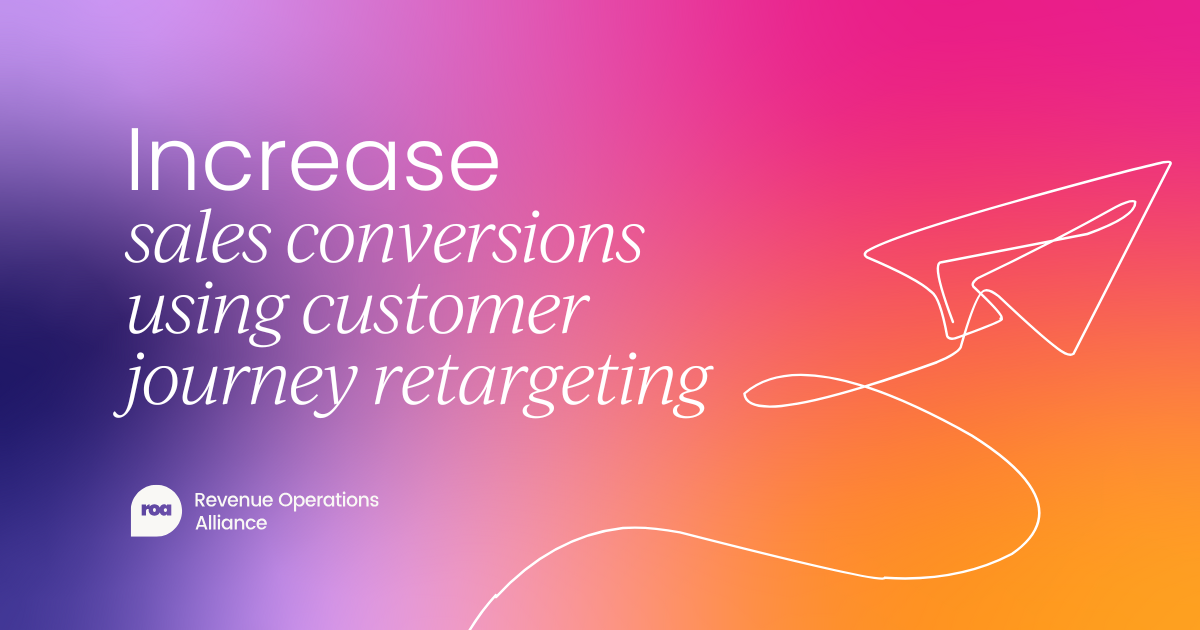Account-based marketing (ABM) typically has a higher ROI than other marketing activities due to its targeted and personalized approach. But how effective is it in bringing in sales?
This can be difficult to measure directly, so revenue teams rely on ABM attribution models to link marketing efforts to sales wins and revenue generation.
Accurate attribution leads to more informed marketing decisions, efficient resource allocation, and a motivated account-based marketing team.
This article covers:
- What marketing attribution is
- Why it’s important
- Challenges of attribution
- 6 ways to monitor ABM attribution
- Metrics to track
What is marketing attribution?
Before we dive into the complexities of attribution, let’s start with a basic definition. Marketing attribution is a method of measuring the impact of marketing campaigns by tracking which touchpoints led to a sales action.
Essentially, this is a way of ‘crediting’ the marketing initiatives that were most effective at driving sales pipeline and revenue generated.
For account-based marketing attribution, this is narrowed down from all marketing activity to only the account-based activities your team carried out.
This may seem relatively easy, but in reality, attribution models are rather complicated, especially when you consider all the marketing channels a customer may encounter during a long B2B sales cycle.
But that’s a conversation for later, first, let’s discuss why you should care about attribution in the first place.

Why is marketing attribution so important for ABM?
It’s a valid question: If marketing attribution is so complicated to prove, why should you bother? What’s the point?
There are many reasons attribution is vital to a streamlined revenue organization, but we’ll break down the top four.
Gain marketing budget
By proving the effectiveness and ROI of your account-based marketing campaigns your marketing team is better equipped to negotiate an increased budget from leadership.
This means they can throw even more resources at personalized marketing outreach to those dream clients your company is going after.
Improve your marketing campaigns
Since attribution allows you to determine which ABM strategies were most successful at lead generation your marketing team can optimize their campaigns to ensure they improve over time.
For example, if an ABM program sending personalized emails gained a high conversion rate, but a similar campaign performed poorly you can more accurately identify what went well in the first campaign compared to the second.
Plus if a specific account responds well to an ABM campaign, you can double down on your efforts to bring in more leads.

Motivate your marketing team
Marketing attribution lets marketers understand how much revenue they’re directly influencing or generating for your business. These insights can motivate them to perform better as they understand their impact and value to the organization.
Plus, linking campaign success to revenue may mean you can justify giving your top performers a bonus in line with the revenue they’ve generated. After all, your account-based marketing team is filling the sales pipeline with high-quality leads for the sales team.
Offering a bonus or non-monetary incentive based on performance is a great way to motivate and reward your marketers.
Get the sales team on board
Accurate attribution is also a great way to get buy-in from the sales team for the account-based marketing strategy.
ABM campaigns are more successful when marketing and sales teams work together, so showing sales reps the impact of marketing efforts makes it easy to get on board and excited about ABM.
Aligning sales and marketing teams means a more streamlined customer journey for those key target accounts, so this is an important step to get right.

Challenges of account-based marketing attribution
We mentioned earlier that tracking ABM attribution is a complex process, this is the section where we explain why. Including the four most common challenges of measuring attribution.
“Attribution is an imperfect science. It's never going to be 100% correct, so as long as it's [broadly] correct it’s okay.
“We know that there's the dark funnel. We know that there are buying committees. We know that people don't allow cookies, a lot of them, especially if you're selling into IT, they go incognito mode.
“So it's very hard to be very scientific about it.”
– Olga Traskova, VP of Revenue Operations at Birdeye
Long, complex sales cycle
In B2B marketing, sales cycles are long and complex with multiple stakeholders involved at each stage. This makes it difficult to keep track of all the interactions each stakeholder had with your brand before purchasing, and even more difficult to tell which activity converted them.
The more decision-makers involved in the buying process, the more complex the deal, and the harder it is to attribute the marketing activity.
Multiple touchpoints
Another factor that complicates marketing attribution models is the vast number of touchpoints any stakeholder is likely to interact with.
With more marketing channels and activity than ever, pinpointing the exact interaction that converted your prospect is like finding a needle in a haystack.
Depending on how targeted your ABM campaign is this may become easier, especially if you only targeted a handful of accounts on a couple of channels. Taking a more direct approach to ABM can make it easier to attribute results.

Data integration and hygiene
Data integration and hygieneits are huge issues in accurately attributing revenue.
If your marketing data isn’t fully integrated with your sales data in a central source of truth (such as a CRM) then it’s almost impossible to track where your leads came from – never mind link them to a specific campaign.
Each of your marketing tools should communicate with your CRM effectively to ensure data is being logged.
Plus, if your data is messy, full of duplicate data, and mistakes there’s no way you’ll be able to decipher the customer journey of an individual stakeholder, so it’s important to maintain data hygiene in your CRM.
Dark funnel
As if all that wasn’t complicated enough, enter the dark funnel.
The dark funnel is essentially all those unseen interactions your prospects have with your brand. Some examples include:
- Conversations with co-workers
- Seeing their peers mention your solution on a social post
- Discussions on Reddit/Quora
- Read about your org somewhere
- Listened to a podcast that mentioned your solution
These interactions may then encourage a conversion through your ABM channels. But it can be difficult to tell if the activity itself was important, or if they were already willing to convert.
It’s almost impossible to gather data on the dark funnel – adding to the complexity of creating a robust attribution model.

6 ways to monitor ABM attribution
Now we understand the challenges that may arise when setting up account-based marketing attribution, it’s time to discuss some best practices for ensuring accurate attribution.
Identify key accounts
The first step of an ABM plan is to identify the target accounts for your campaign. Outlining these early can help you keep tabs on how they’re interacting with your efforts, making attribution easier.
Tracking the activity of every potential client is complex, but reducing this to only decision makers at a handful of key accounts can make this process much more straightforward.
Measure intent data
The best thing to measure when starting to implement attribution is intent data. This tracks prospect behavior and indicates how likely they are to consider purchasing (or actually purchase).
Starting here means you can more accurately track their buyer intent throughout the customer journey and pinpoint each marketing interaction that increased that intent.
This is especially clear once you start personalizing interactions with the prospect via your account-based strategy.
The other perk of measuring intent data is its relative ease to track — a session on your website, then a download on your ebook, and a click on your email. These are easy things to see, and with the right marketing tools, these can even be monitored automatically.

Map accounts against buyer journey
Once you’ve started to track intent data, you can start to consolidate this information and organize it according to the steps in your buyers' journey. This will make it more digestible and easier to pull clear insights.
Having this data all in one place means you can easily track how your customers traverse the customer journey, which touchpoints they interact with, and which interactions are most likely to lead to a conversion.
For example, if sales close a target account and your CRM data shows several unique site visits, a couple of ebook downloads (from your ABM plan), and three demo requests, you’ll be able to attribute some of that sale to ABM activity.
This can still be quite challenging to implement but it’s important to remember that attribution won’t be perfect, so some accurate data and attribution is better than none, when it comes to improving your team’s marketing efforts.
Partner with other teams
Sales and customer success teams have first-hand experience of the customer journey, and their data will be useful in helping marketers to attribute revenue.
Ensuring the entire customer journey’s data is integrated into one shared source allows accurate insights into the buyer journey and prevents unnecessary friction.
Having this shared source of data also allows these teams to agree on the metrics that should be measured when attributing conversions to ABM initiatives.
“Make it a cultural trait to over-communicate. Various data sources all need to be brought together into a single transparent view of what we all know is an extremely and increasingly complex buyer journey.
“To do that, it will require buy-in from other teams like Sales, CSM, Product, etc.
To get that buy-in, people need to feel respected and not just needed (or abused) – so involve key people from various teams into the discussions, brainstorming, planning, and retrospectives.
“It will require more than just the marketing team to see all the different points where prospective buyers are engaging. Once the people share a common vision, everything else is much easier to accomplish.”
– Jason Mashak, Director of Marketing & Communications at Whalebone

Track bottom-of-funnel data
As well as intent signals, it’s important to track bottom-of-funnel data to attribute deal success to the ABM team.
Once an account is in your sales funnel, your marketing team can use account-based campaigns to convince the client to buy from your organization with creative, and personalized messaging.
If the account then became a customer, the ABM team would be attributed some of that deal, as they supported sales in closing.
Refine and adjust
There’s no need to jump into the deep end and start tracking all your accounts at once. It’s totally fine to start small, with one or two accounts, and slowly scale your attribution model.
Ensuring your ABM attribution system is working as intended can take some trial and error, as well as time to implement and track. Be patient, and keep adjusting your model to increase accuracy over time.
Once you’re happy with the model and its accuracy you can start to slowly scale it to more and more accounts.
Taking a slow and steady approach allows your account-based marketing team time to dive into the insights and data from attribution at a small scale before scaling their thinking to the entire customer journey.

ABM metrics to track for attribution
Some metrics to consider tracking to provide a more comprehensive view of attribution include:
- Conversion rate: Percentage of users who’ve taken a pre-defined action, such as downloading an ebook, or requesting a demo.
- Buyer intent: The likelihood a potential buyer will purchase from your company.
- Return on ad spend (ROAS): How much revenue has been brought in compared to the amount spent on a particular ad.
- Cost per click: The average cost per lead generated.
- Clicks: The number of users who’ve clicked on an action button or link.
- Engagement: The percentage of people who’ve interacted with your post compared to those who’ve swiped past.
- Open rate: The percentage of people who opened your email.
- Reply rate: The percentage of prospects who responded to email outreach.
- Impressions: The number of people who’ve seen your post or ad, essentially the reach of your campaign.
- Customer lifetime value (LTV): The average revenue generated from each customer over the course of their relationship with your business.











